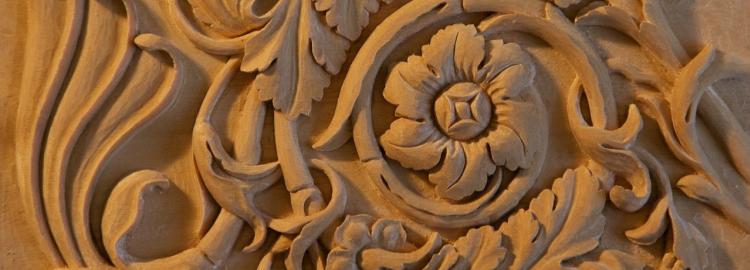You are here
Roman
Roman art is defined as the Roman civilization from Romulus to the Emperor Constantine, spanning a period of over 1,000 years. To better understand the origins of Roman art, it helps to look at the character of the Romans who lived at the beginning of Roman history (c. 753 BCE). Preoccupied with amassing wealth and increasing their lands by conquering neighboring countries, the Romans failed initially to develop a unique art of their own. Instead, they absorbed the archaic Etruscan style, following their conquest of Etruria (present-day Tuscany) in 280 BCE.
The Greek Influence
The transformation from the primitive Etruscan style to the grandeur of the imperial age was due in part to the conquest of the Greek states, which enriched Rome with a wealth of artistic spoils. It also brought a host of Greek artists to Rome to design buildings, repair old sculptures and create new ones. It was under the tutelage and guidance of these Greeks, with their free-spirited Hellenistic art, that the more austere Romans gradually developed a national style of their own.
However, the Romans didn't merely imitate Grecian art, they added to it. For example, in architecture, they were much more utilitarian than the Greeks, inventing the Roman arch, which enabled them to build a massive system of roads and aqueducts. In fact, it is in their architecture that the Romans created their most magnificent works—monumental temples, basilicas and theatres. The Coliseum and Pantheon in Rome and the Hagia Sophia in Constantinople (present-day Istanbul) are excellent examples of their ingenuity.
The invention of the triumphal arch was yet another important addition to Roman civic and monumental architecture. It was typically decorated with carvings and inscriptions designed to glorify the exploits of Roman leaders. The Arch of Constantine is one example. Monumental pillars covered with low relief carving were also used to pay tribute to the accomplishments of Roman emperors. This narrative technique was used in 113 AD to decorate the entire surface of Trajan's Column, Rome's most famous carved pillar. A carved spiral frieze extends from the base to the top and depicts the story of Trajan's adventures against the Dacians. The dedication at the base of the column is a perfect example of the calligraphy we now refer to as "Roman" lettering. First painted on the surface of the marble and then cut in, the work exemplifies the beauty that can be achieved at the hands of skilled artisans.
The Roman Order
In sculpture, the Romans created portrait busts of senators and rulers that were much more realistic than those of the Greeks. However, as Alexander Speltz duly notes in his book, The Styles of Ornamentation, "The manner in which the Romans enriched their ornament was detrimental to the characteristic Greek outlines, and the insatiable luxury predominant during the time of the Caesars finally destroyed completely the exquisite harmony of Greek art."
Roman Influence Continues to Thrive Even Today
As the Roman Empire expanded, it brought along its arts and architecture. Ancient Roman mosaics, theatres, temples, sculpture and statuary can be found as far north as Hadrian's Wall in England, south at Leptis Magna in Libya, east at Hagia Sophia in Istanbul and west at Emerita Augusta in Spain.
When the Western Roman Empire fell, finally overrun by barbarian tribes, Christianity became the state religion. Classic art declined and new art arose; the Byzantine style. However, it was in the 15th century, during the Italian Renaissance that Roman art experienced a massive revival. Today, we see its influence and legacy in all branches of the arts.


